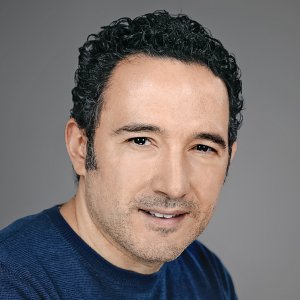Retail Drug Sales: Two Decades Living the Transformation

STORY INLINE POST
Last April, I celebrated 20 years in the dynamic industry of retail drug sales. In this period, I can dare to say that the industry has been transformed. I will use these lines to analyze these changes, reflect on trends and share with you what I consider has been the transformation of the Mexican pharmacy.
I do not want to rank the changes according to order of importance and impact but the change in the portfolio of products that today are marketed in a pharmacy, compared to what was offered 20 years ago, definitely takes first place. Generic drugs were products that were intended to be dispensed only in government health institutions; today, these drugs represent more than 45 percent of the total market.
If the reader participates in this industry, he/she will surely remember some of the strategies or efforts that drove that change; for me, one of the most representative was the strategy of own brands that larger and self-service chains pushed. These were products that represented a better price option for the consumer, allowing penetration into new socioeconomic segments or attracting customer loyalty among those who now had a more affordable option for the follow-up of their treatment, giving greater dynamism to the market. A clear example of this is when the laboratories that marketed brands began to offer added value to the product through loyalty plans, thus influencing the decision to purchase and preference for their medicines.
In terms of quality, bio comparability requirements were established almost 10 years ago, eliminating the so-called "similar" drugs from the market, increasing regulatory oversight, and multiplying the number of molecules in which a generic drug is offered.
The introduction of generics offered the national industry a greater participation in the Mexican private market, annually gaining an increasing percentage of the market, thus making it more dynamic.
During this period, the perspective changed with respect to the importance of each of its levels. Imagine the value chain formed by the manufacturer, followed by wholesalers and then retailers that reached the end consumer: 20 years ago, the wholesaler dominated, with three or a maximum four competitors at this level, concentrating a very high market share. Further back, there was greater pulverization, there were many laboratories, but with less concentrated market share. Upstream in the value chain, with the retailers, this pulverization also occurred. There were no national chains, and the regional chains tended to dominate a few states in the country. This level was also fragmented, while the wholesaler had a significant weight that allowed him to manage the supply chain by imposing conditions on the other links.
Although wholesalers still retain a significant part of the market, their market share today is much lower than it was 20 years ago. It seems to me that the introduction of generics also contributed, I think they were never able to build a strong strategy and both manufacturers and retailers wanted to have a direct relationship because they did not see value in having an intermediary.
As pharmacy chains grew throughout the country, gaining market share and coverage, a relationship with another intermediary became less indispensable. Between 2012 and 2016, direct sales from manufacturers to retailers took a significant leap; perhaps the bankruptcy of Casa Saba could have been the trigger. A direct relationship makes more sense, more value is built, and commercial plans are easier to execute.
As a third important change, I would like to talk about the pharmacy-adjacent doctor's office. The reader knows perfectly well its origin in Mexico and how the changes in the regulation of antibiotics sales fueled its growth. From my perspective, the cause of its growth is simple: there is a deficit in the health budget to causes a lack of installed capacity. That unmet demand generates opportunities that pharmacies have been able to take advantage of. It is here where I intend to share what seems to me to be the first trend in the Mexican health market: public investment will continue to be insufficient, the population will age and demand more expensive treatments, and those who manage to offer accessible options for the consumer will take advantage of the opportunity.

There are other trends in our industry. Digital transformation, for example, is happening in all sectors; some have changed completely, and we should not think that ours will be the exception. Technology offers us the ability to do things that a few years ago were unimaginable. We have all the elements to foster even greater changes. This is a large and indispensable industry, with great opportunities to meet the needs of the population seeking to improve their healthcare. If in the past 20 years we believe that this business has changed, in the next 20 years we will see it change again.
(The comments contained in this document are made by the author as a personal opinion and may not represent the vision of the publishing company, nor the companies and institutions where the author collaborates or participates. The data and graphics were provided by IQVia Mexico.)
























